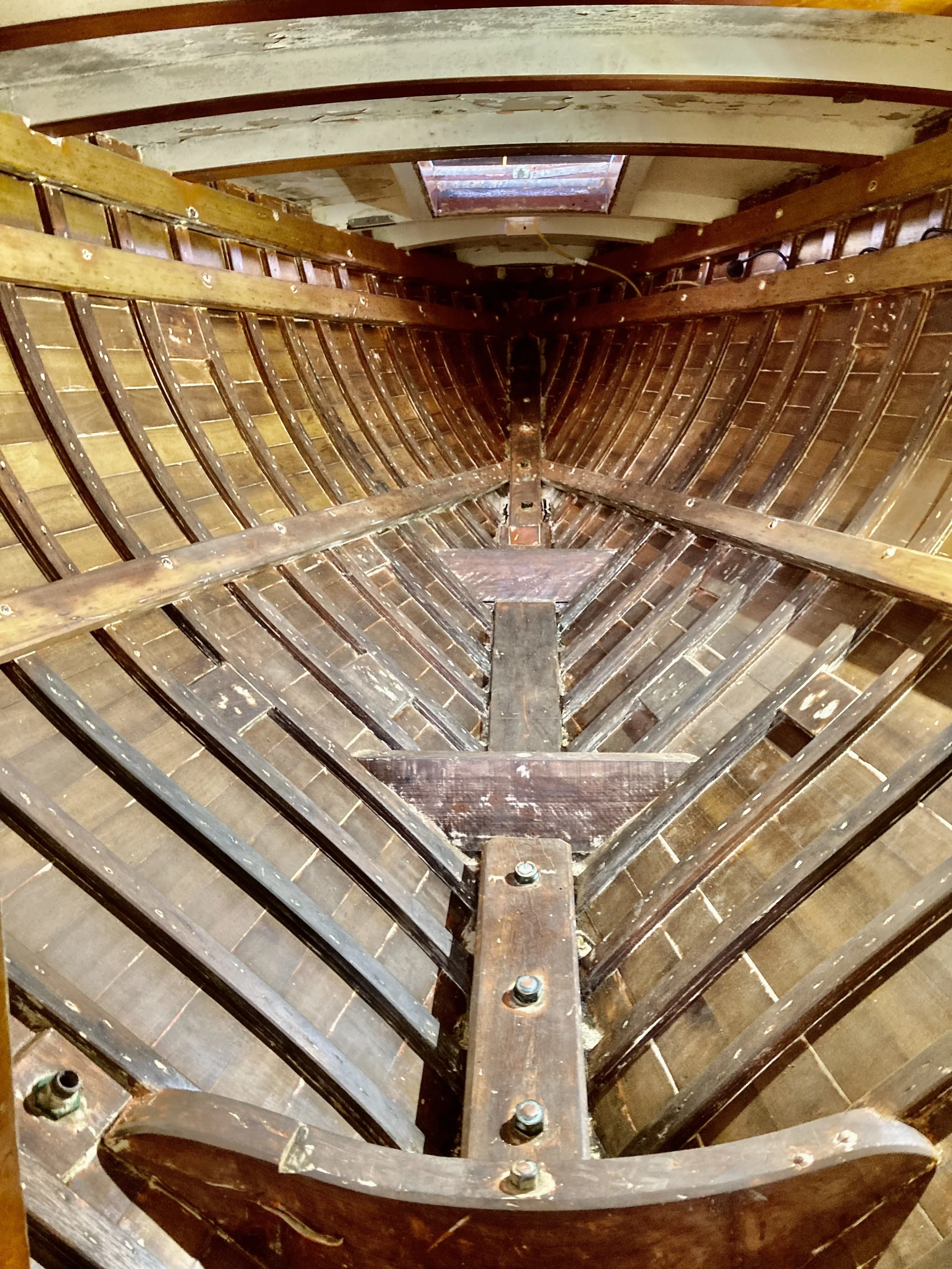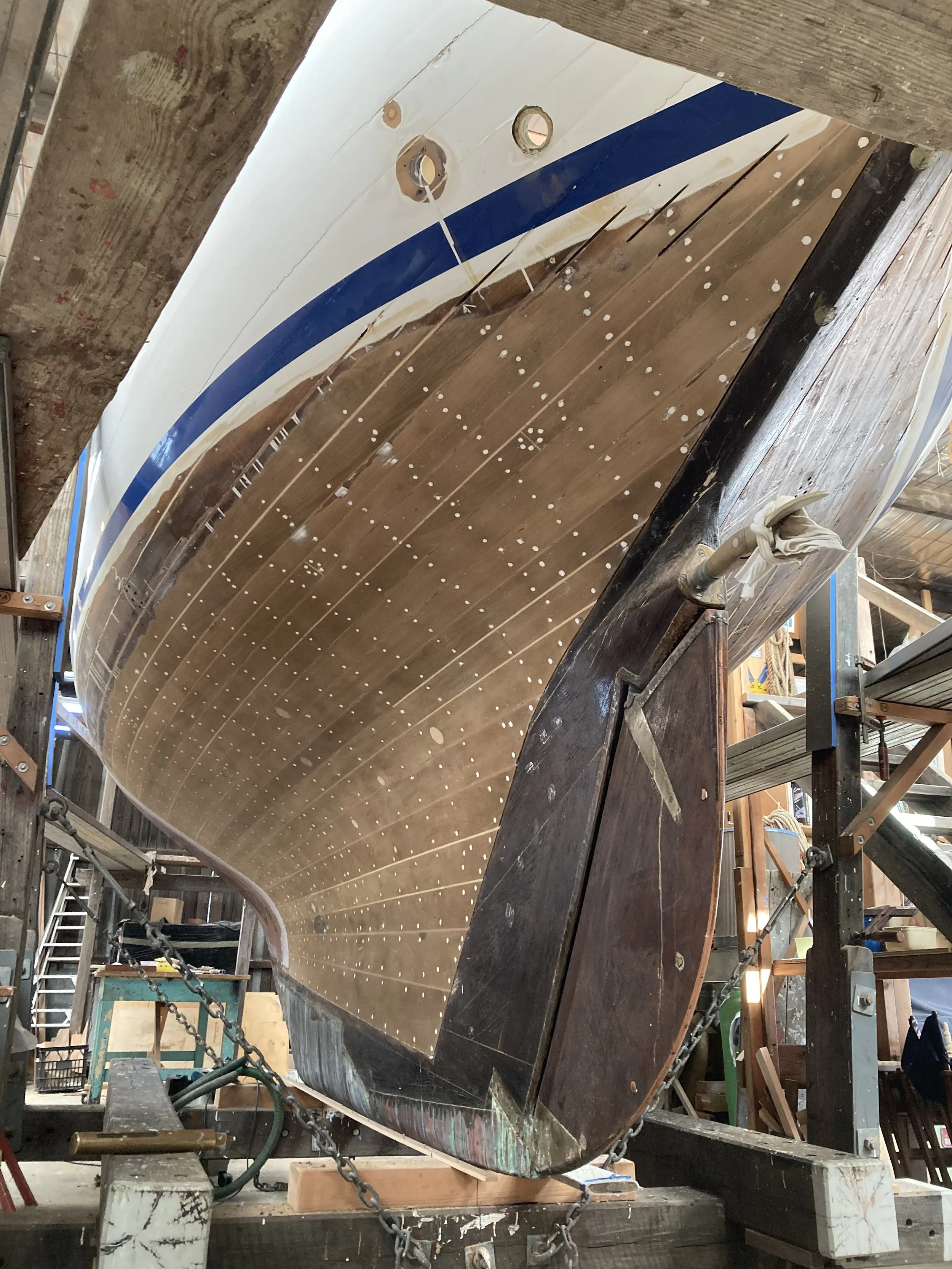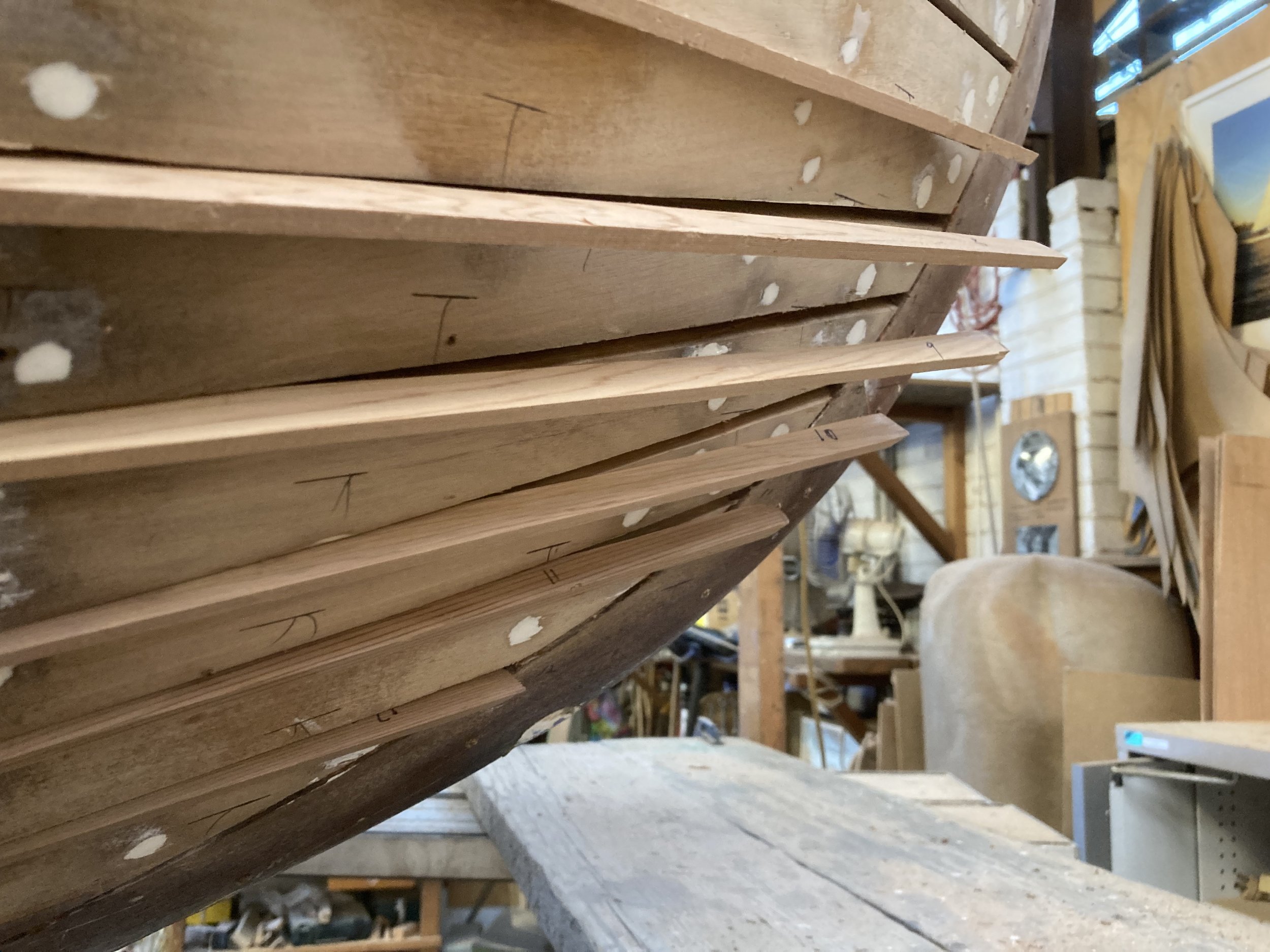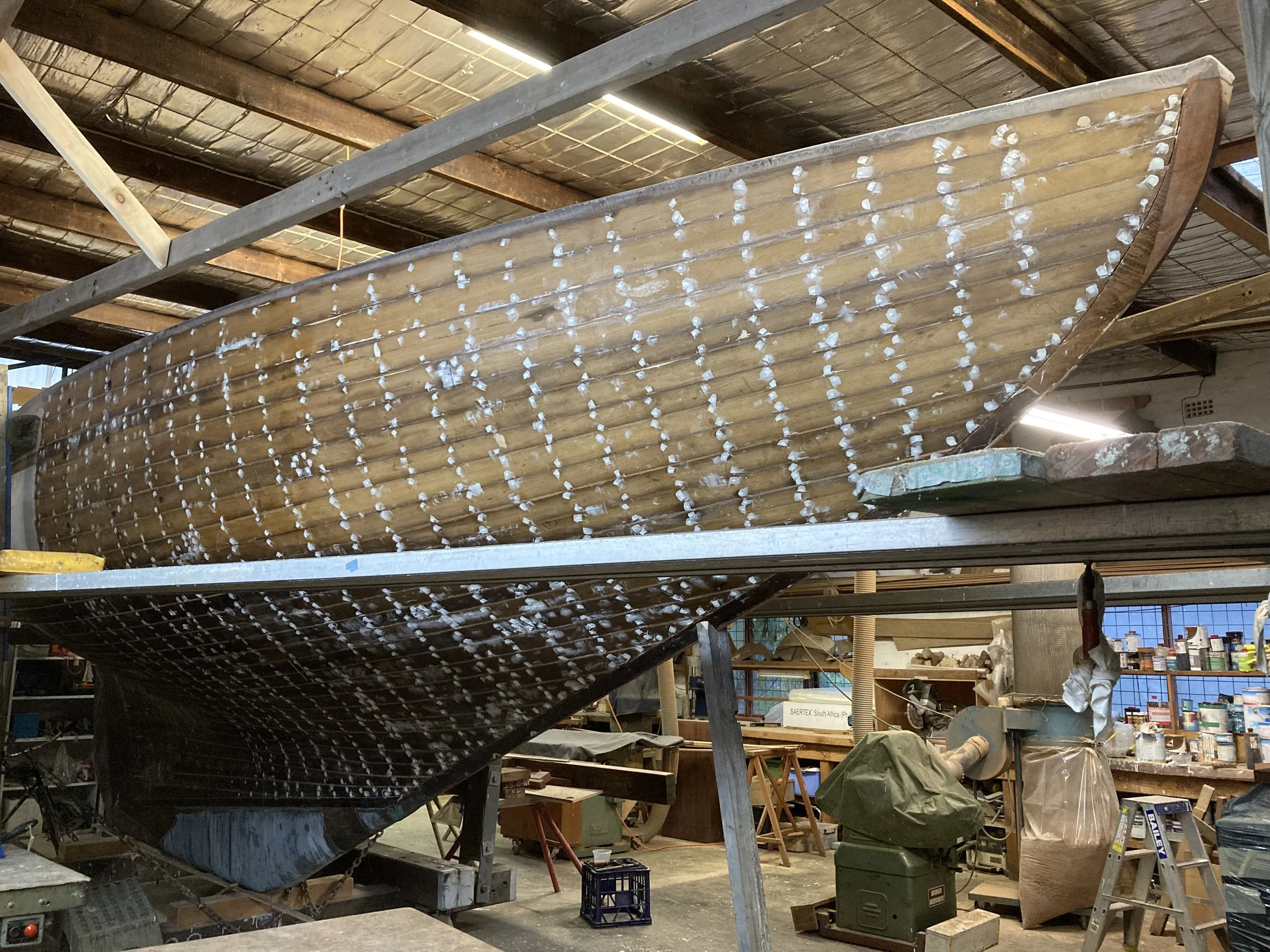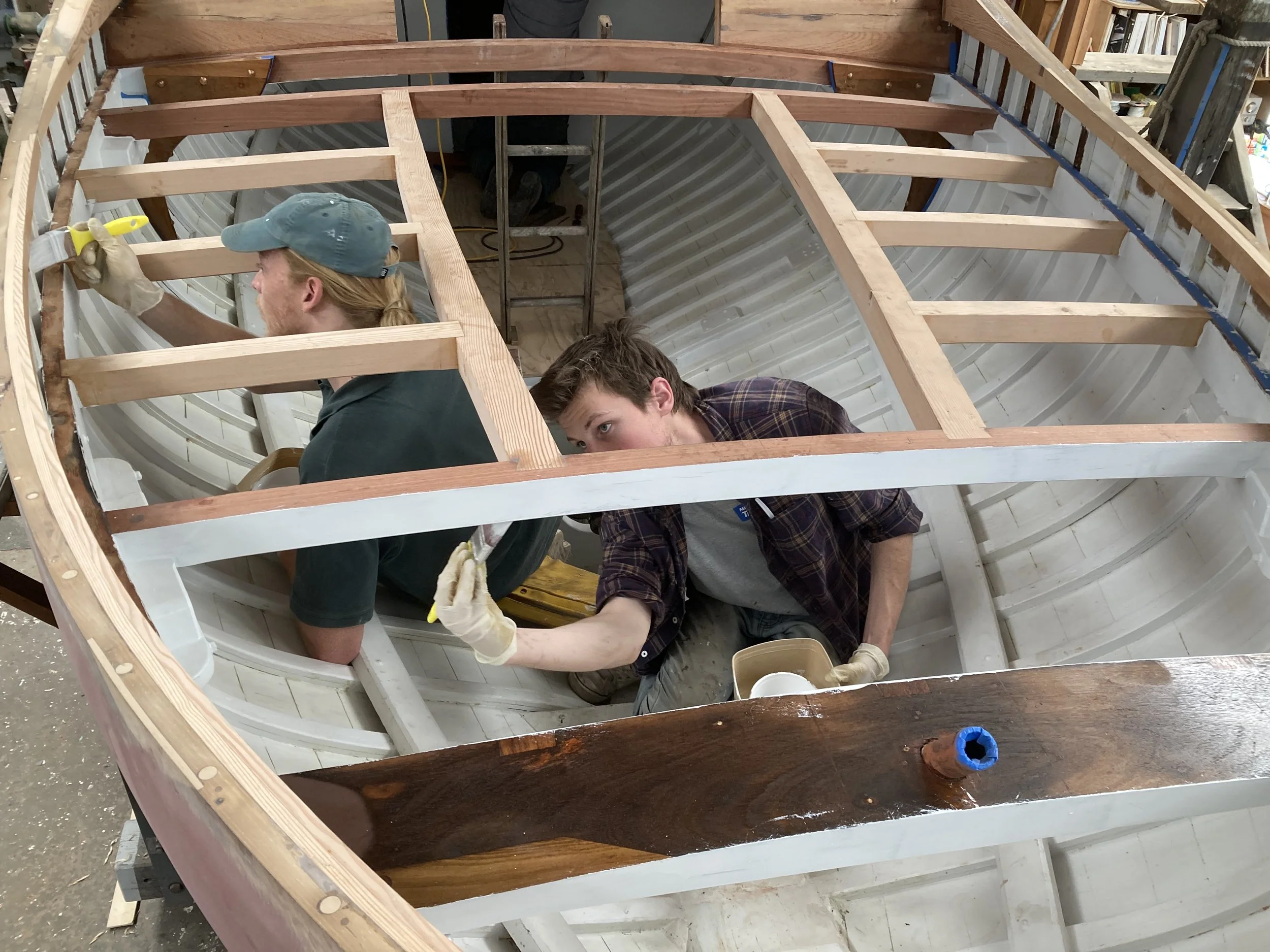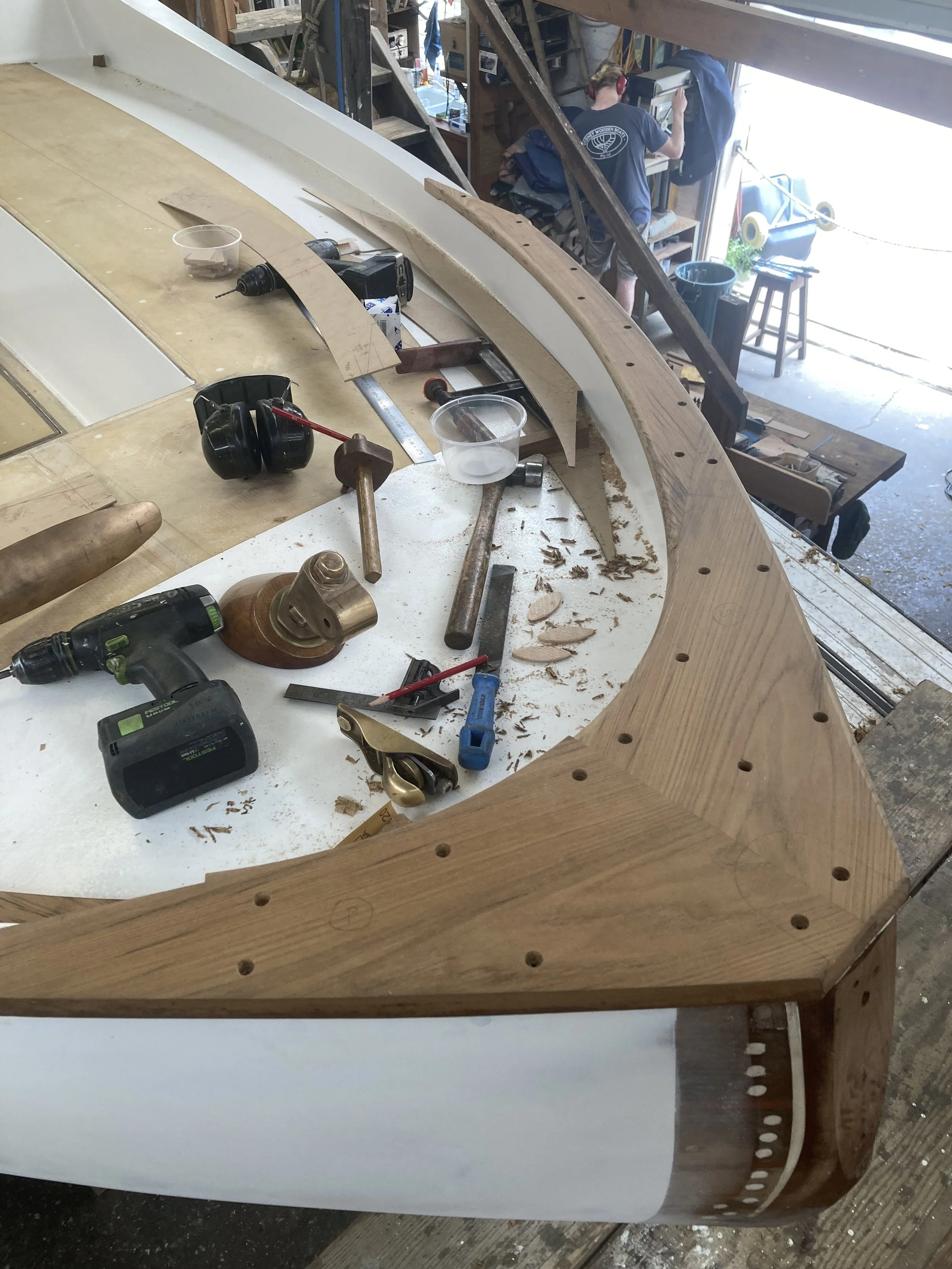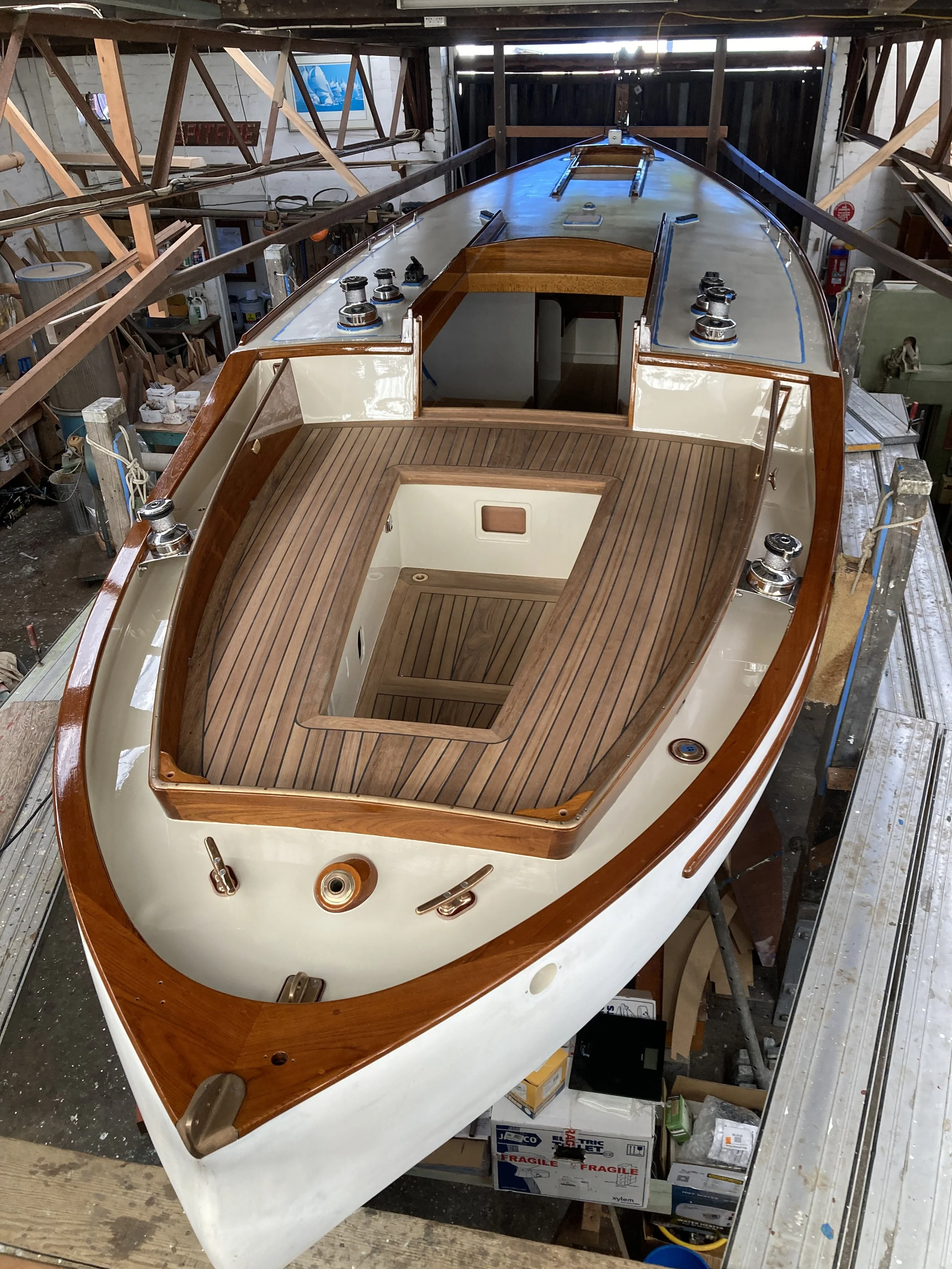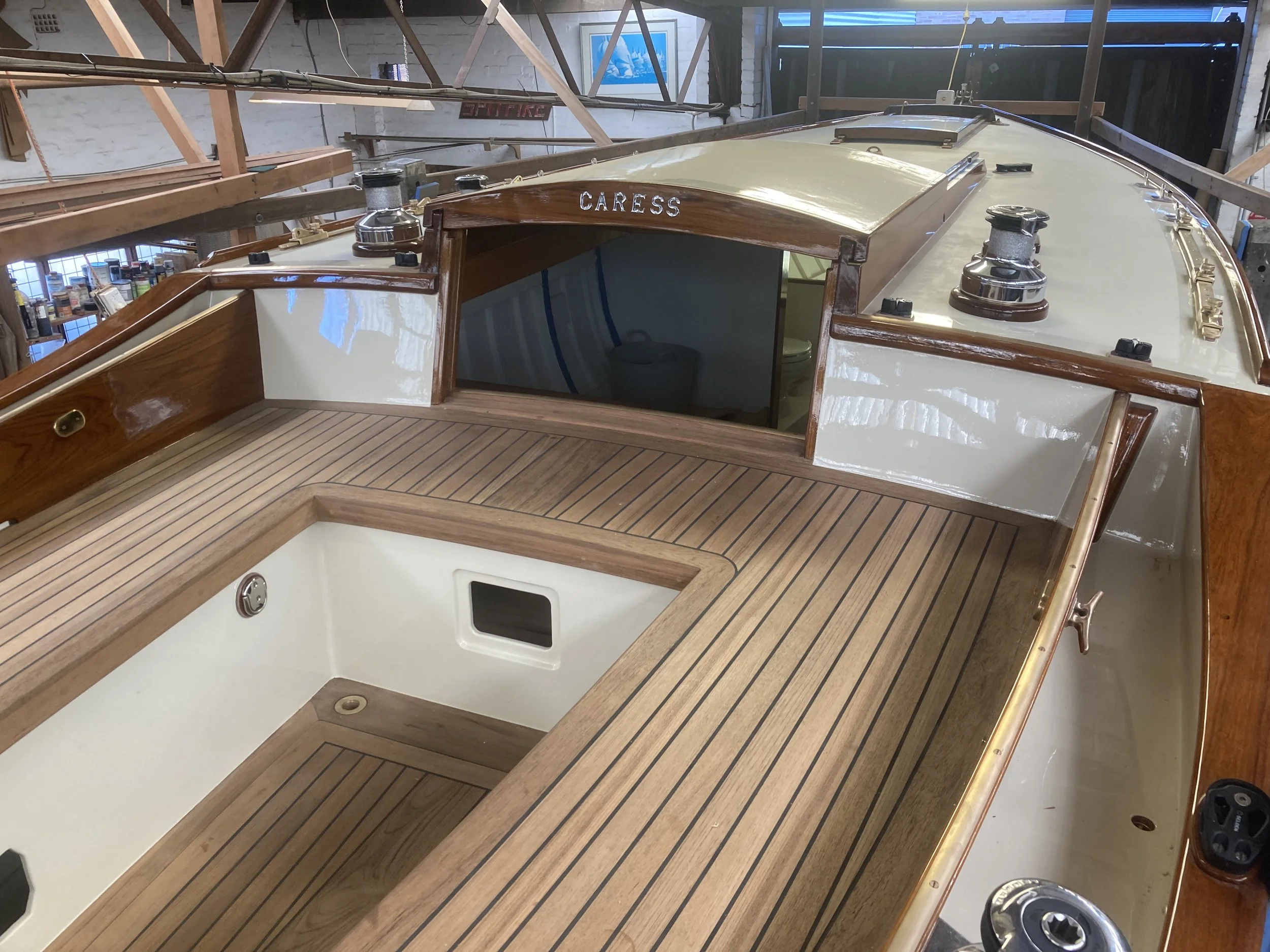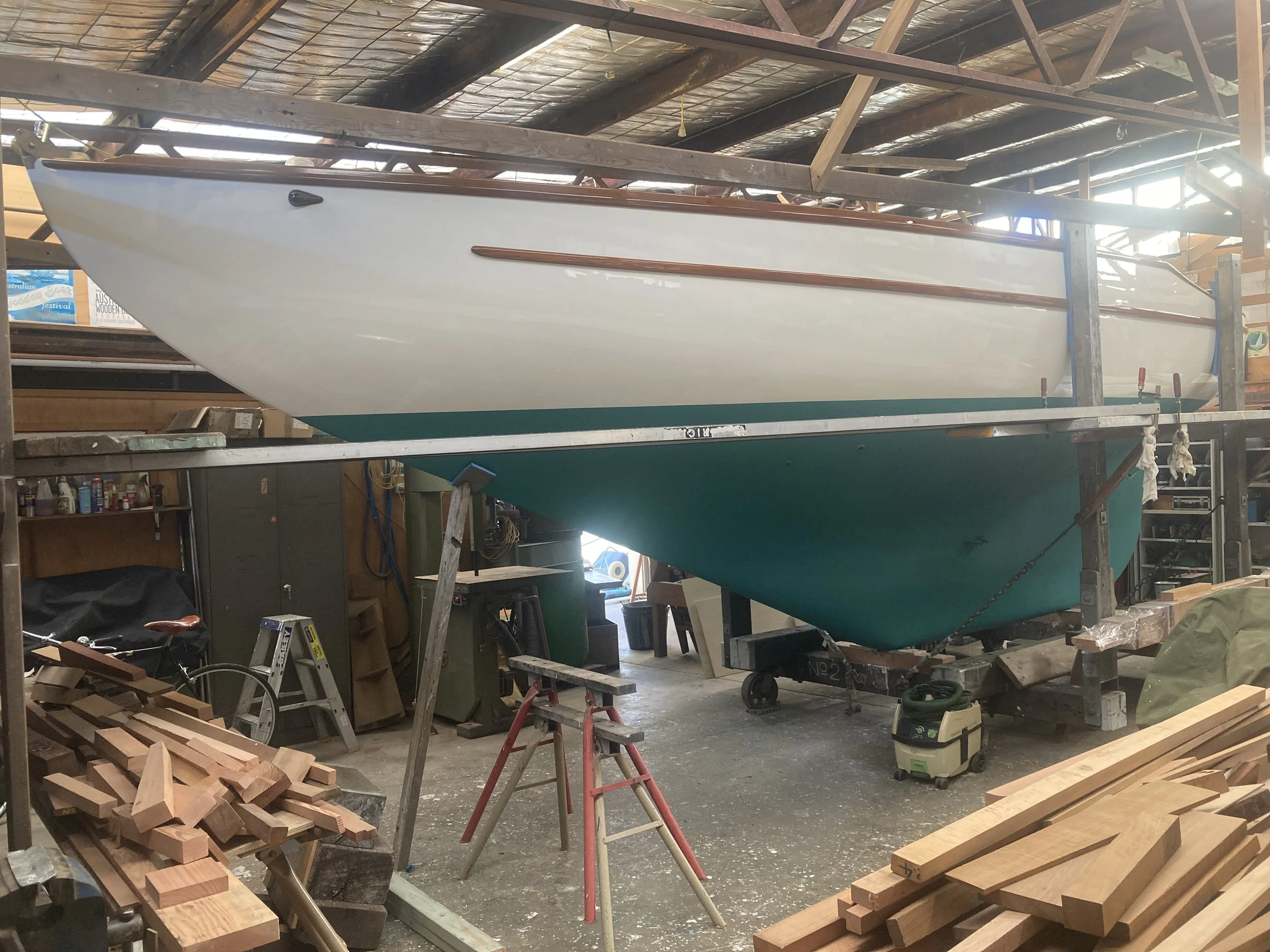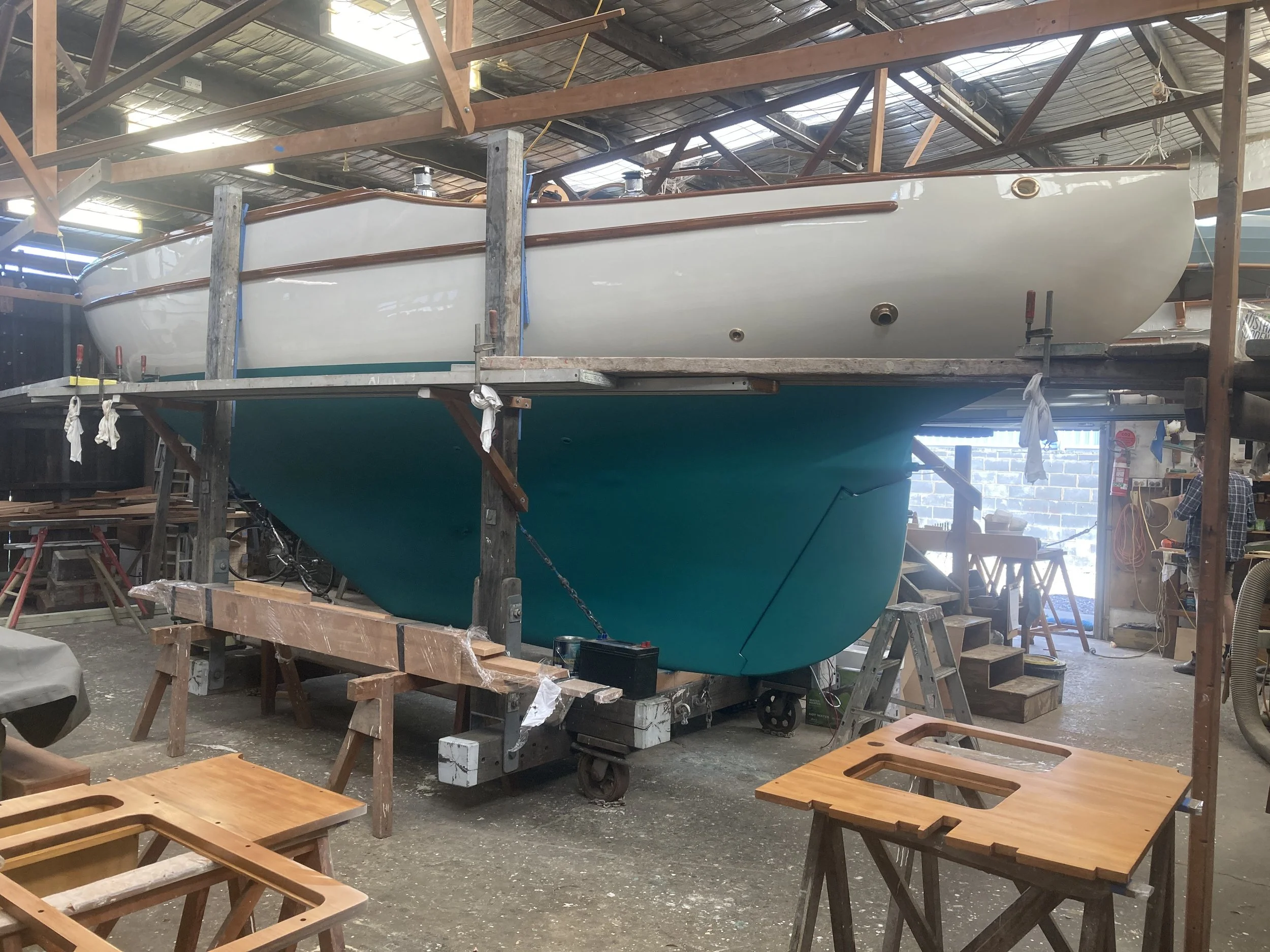CARESS Part 2 -Restoration & Design
The fully restored, Caress was relaunched on Sydney Harbour- Image Gerry Colley
RESTORATION
The restoration of CARESS has been undertaken by Simon Sadubin of Sydney Wooden Boats in Mona Vale and is now complete. After sixty years of constant use the entire boat has been stripped back to bare inside and out as shown in the images below.
All the frames have been repaired, where necessary and the boat refastened as needed. All butt blocks have been replaced and refastened and the keel has been re-bedded with the keel bolts all checked. Once all the structural work was completed every seam had the original corking and putty removed, each seam then being filled with wedge shaped red cedar, glued into place to make an extremely strong hull even stronger - effectively becoming a monocoque construction. This was then sheathed with bi-axial fibreglass adding further strength and integrity to water ingress resistance.
The aft deck, cockpit and teak joinery have also been replaced and a new interior, modelled on the original, has been crafted and installed. All the rig attachment points have been remade and strengthened and a new rig has been built.
The fully restored, CARESS was relaunched on Sydney Harbour in mid-2022. She is kept at the CYC in Sydney and is currently competing in the SASC classic yacht division winter series.
Design
CARESS was designed by Wally Ward (1888-1965), who was a keen amateur yacht designer. He created a series of yachts over a period of around 30 years from 1937 to 1965. Based on his own very successful design Janaway in 1937.
Wally Ward & his son John and JANAWAY under sail
Wally designed JASNAR in 1944 (currently owned by Gordon Ingate) and then sisterships CARESS & CAMIRA in 1948 which became the inspiration for the Carmen class during the 1960’s
CAMIRA – sistership to CARESS and JASNAR
In each of his designs, Wally sought to produce a well-balanced, easily handled yacht least wave making for her displacement length ratio. To achieve this, he used the Wave Theory of Colin Archer to reduce resistance and the Metacentric Shelf principle expounded by Admiral Turner to achieve excellent hull balance.
These same principles were applied to the design of CARESS, very successfully.
Lines plan of RD3 CARESS designed in 1948 by Wally Ward
Detailed construction drawing of RD3 & CARESS designed in 1948 by Wally Ward
Sailing Model
Before commencing construction of CARESS, Wally built beautifully detailed accurate free sailing model at ¾” / 1ft scale.
CARESS scale sailing model built by Wally Ward in 1948
The model actually sails very well, without any external radio control. With the rudder held amidships it is perfectly balanced and steers itself through lifts and knocks, maintaining a steady course without any sign of rounding up in gusts, just as does the full-sized boat
CARESS sailing model maintaining a steady course beautifully, without any external control
A Design Progression
CARESS was significantly larger than her predecessor JANAWAY. She was designed as a comfortable day sailor and cruising boat suitable for 4 people.
CARMEN and CADENCE were a natural progression from CARESS with distinct similarities and refinements to meet the requirements of the RORC rating rule for offshore racing. These included a higher stem and finer topsides forward for sailing to windward and a deeper keel for improved stability and sail carrying capability.
There were also some changes to the hull and keel shape. CARMEN and CADENCE had a cut away forefoot and longer stern overhang with shallower buttock lines aft.
The hull sections were quite similar, although CADENCE has higher and finer topsides forward, shallow garboards and a deeper keel.
Upwind with balanced helm - Image Gerry Colley
Clean, fair lines with minimal wake - Image Gerry Colley


